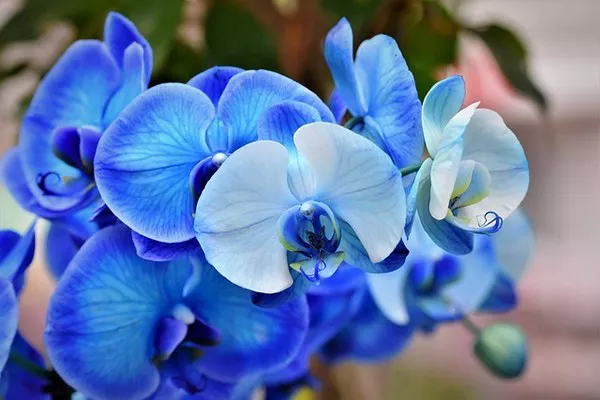Orchids are revered for their exquisite blooms, captivating fragrances, and the ability to transform any space into a haven of beauty. However, orchid enthusiasts often encounter a common concern: the premature falling off of flowers. Understanding the reasons behind this phenomenon and implementing appropriate measures can help ensure the health and longevity of your orchid plants. In this comprehensive guide, we will explore the various factors that contribute to orchid flower drop and provide practical steps to address and prevent this issue.
Understanding the Orchid Flowering Process
Before delving into the causes of flower drop, it’s crucial to grasp the orchid flowering process. Orchids undergo a sequence of stages, including vegetative growth, bud development, flowering, and dormancy. Flowering is a delicate and energy-intensive phase for orchids, demanding optimal conditions for successful bloom retention.
Common Causes of Orchid Flower Drop
Environmental Stress: Orchids are sensitive to sudden changes in their environment. Drastic fluctuations in temperature, humidity, or light levels can induce stress, leading to flower drop. Ensure a stable and consistent environment for your orchids to thrive.
Improper Watering: Overwatering or underwatering can both contribute to flower drop. Orchids prefer a well-draining medium and a watering schedule that allows the roots to dry out between waterings. Monitor the moisture levels in the growing medium and adjust your watering routine accordingly.
Nutrient Imbalance: Orchids have specific nutritional requirements, and an imbalance in essential nutrients can affect flower retention. Use a balanced orchid fertilizer regularly, following the recommended dosage, to provide the necessary nutrients for healthy growth and blooming.
Pest Infestation: Insects such as spider mites, aphids, or scale insects can pose a threat to orchids, leading to flower drop. Regularly inspect your plants for signs of pests and take appropriate measures, such as introducing beneficial insects or using organic pesticides, to keep infestations in check.
Disease: Fungal or bacterial infections can compromise the overall health of orchids, resulting in flower drop. Ensure good air circulation, maintain proper hygiene, and promptly treat any signs of disease with appropriate fungicides or bactericides.
Pot-Bound Roots: Orchids may outgrow their containers, leading to crowded and pot-bound roots. This can impede nutrient uptake and cause stress, resulting in flower drop. Repot your orchid when you notice overcrowded roots, using a suitable orchid mix to promote healthy growth.
Natural Senescence: Orchid flowers, like those of many plants, have a finite lifespan. It is natural for older blooms to wilt and fall off as the plant redirects its energy toward new growth. Regularly remove spent flowers to encourage the orchid to focus on producing new buds.
Practical Steps to Prevent and Address Orchid Flower Drop
Optimal Growing Conditions: Provide a stable environment with consistent temperature, humidity, and light levels. Avoid placing orchids near drafts, heaters, or air conditioners, as sudden changes can stress the plants.
Proper Watering Practices: Establish a watering routine that suits your orchid’s specific needs. Use a well-draining orchid mix and water thoroughly when the top layer of the medium feels dry to the touch. Adjust the frequency of watering based on factors such as humidity and temperature.
Nutrient Management: Feed your orchids regularly with a balanced orchid fertilizer during the growing season. Follow the recommended dilution rates, and be mindful not to overfertilize, as excess nutrients can be as detrimental as deficiencies.
Pest Control: Regularly inspect your orchids for signs of pests. Introduce natural predators, such as ladybugs or predatory mites, or use organic pesticides to keep infestations in check. Isolate infected plants to prevent the spread of pests.
Disease Prevention: Promote good air circulation around your orchids by avoiding overcrowding and providing adequate spacing between plants. Maintain cleanliness by removing debris and dead plant material regularly. If disease is detected, promptly treat the affected plants with appropriate fungicides or bactericides.
Repotting: Monitor the growth of your orchids and repot them when necessary. Check for pot-bound roots and provide a fresh orchid mix to support healthy growth. Repotting is best done during the post-blooming phase or when the orchid shows signs of outgrowing its container.
Regular Maintenance: Remove spent flowers and yellowing leaves regularly to redirect the plant’s energy toward new growth. Prune with sterile tools to prevent the spread of potential diseases.
see also How To Plant Jasmine Flower?A Comprehensive Guide
Conclusion
Orchids are exquisite and resilient plants that, with proper care, can reward enthusiasts with stunning blooms year after year. By understanding the factors contributing to orchid flower drop and implementing the practical steps outlined in this guide, you can create an environment that promotes healthy growth and prolonged flowering. Consistent attention to your orchid’s needs will not only address existing issues but also prevent future challenges, allowing you to enjoy the beauty of these captivating plants for years to come.


